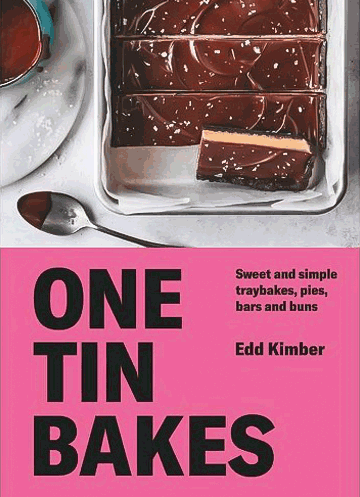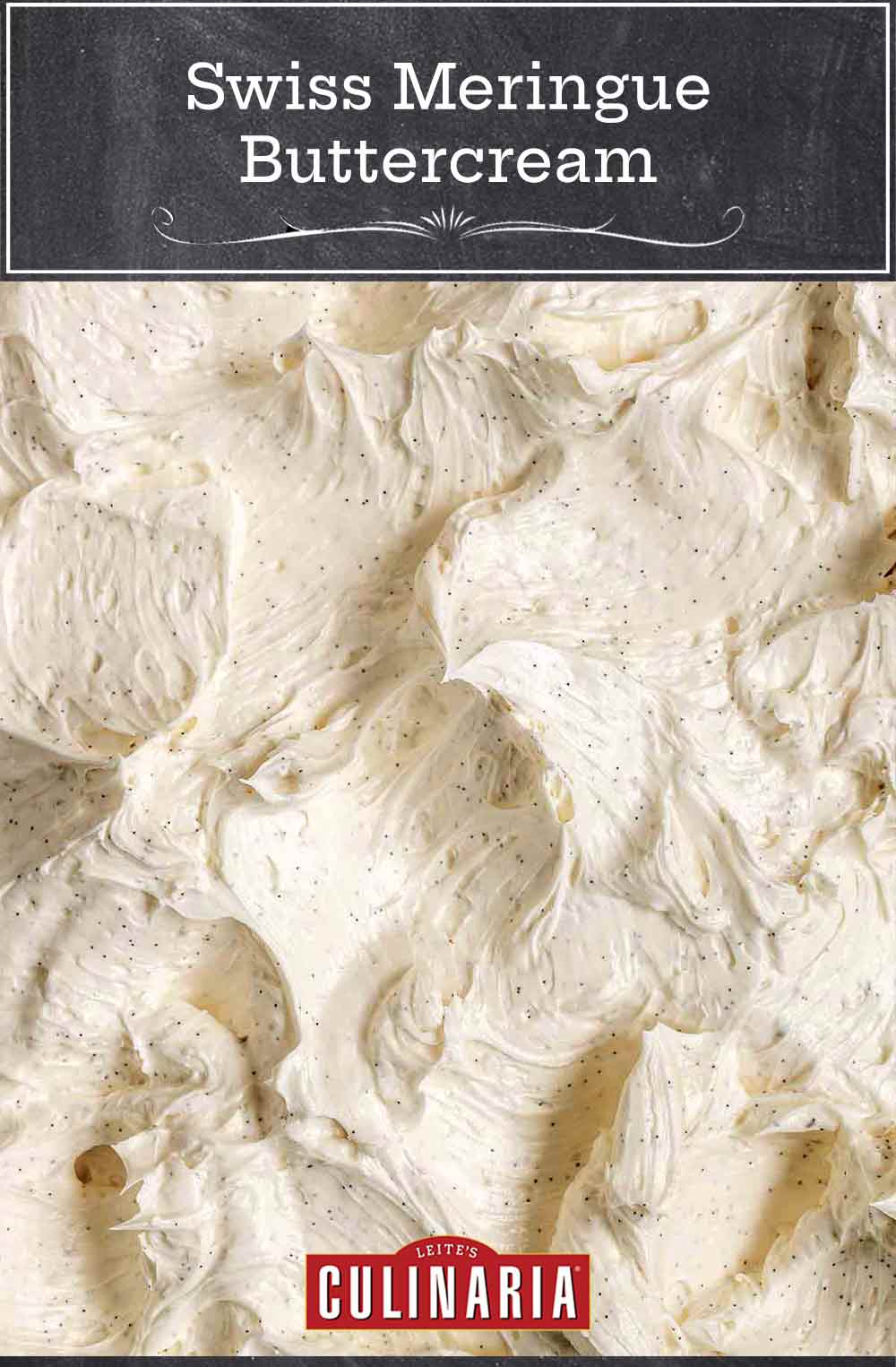
A great vanilla cake deserves a very special buttercream, so I have turned to a super smooth and silky Swiss meringue version. As vanilla is the dominant flavor, this is a recipe for which I would splurge and use a vanilla pod for the buttercream.–Edd Kimber
WHAT’S THE DIFFERENCE BETWEEN SWISS MERINGUE BUTTERCREAM AND REGULAR BUTTERCREAM?
Regular buttercream is another way of saying what Americans typically refer to as frosting. It’s typically made from butter or shortening, confectioners’ sugar, and milk or cream, whereas Swiss meringue buttercream calls for the sugar to be cooked, which makes the resulting buttercream more stable and exceptionally satiny smooth. Swiss meringue buttercreams tend to be slightly less sweet than most frostings and more buttery in flavor, which is not at all a bad thing in our experience. Not at all.

Swiss Meringue Buttercream
Ingredients
- 2 large egg whites
- 1/8 teaspoon cream of tartar
- 3/4 cup superfine sugar (or blitz granulated sugar in a food processor until finely ground)
- 2 sticks plus 1 tablespoon (8 1/2 oz) unsalted butter, diced and at room temperature
- Seeds scraped from 1 vanilla pod (*See Note below)
- Pinch of salt
- Sprinkles (optional)
Instructions
- In a large heatproof bowl, stir together the egg whites, cream of tartar, and sugar. Place the bowl over a pan of simmering water (making certain the bottom of the bowl doesn’t touch the water underneath), stirring regularly, until the sugar has dissolved and the mixture is hot to the touch, 3 to 5 minutes.
- Remove from the heat and, using an electric mixer, whisk until the mixture has stiff peaks, 7 to 10 minutes.
- Slowly add the butter, a piece or two at a time. Beat until the mixture forms a buttercream-like texture and is silky smooth, 4 to 6 minutes.
- Gently beat in the vanilla and salt.
- Use the buttercream to frost a cooled cake and top with sprinkles, if using. Cut into portions and serve. Store, covered, for up to 3 days.
Notes
*What Can I Do With That Used Vanilla Pod?
Don’t discard the used pod. There’s a ton of flavor left inside. You can use it to roast fruits, to make vanilla sugar, to make your own vanilla syrup, or to make your own vanilla extract with vodka or bourbon or rum…oh my!
Nutrition
Nutrition information is automatically calculated, so should only be used as an approximation.
Recipe Testers’ Reviews
I would need to swallow a thesaurus to have enough adjectives to describe this singular frosting. It is so good that it almost makes you want to abandon chocolate frosting.
The frosting is a snap to make. It’s light and seductive and doesn’t reveal the sinful amount of butter used in the recipe. I was anxious about the frosting because I have a love-hate relationship with egg whites. I fear them almost as much as meat cleavers and mandolines. No matter how many photos I look at, I am always trying to figure out when I have reached soft peaks versus stiff peaks. I cannot count the number of overbeaten disasters I’ve produced. That being said, I was not to be deterred and the egg whites had the good sense to surrender and give me a lovely shiny set of stiff peaks.
With the biggest hurdle conquered, I added the butter, salt, and vanilla as directed. The frosting was velvety smooth and the taste was more vanilla than butter. It makes the vanilla cake whole as the two flavors join together. It’s also a frosting which could be eaten directly from the bowl when no one is watching.
I had a moment of panic when I discovered that my vanilla beans were really dry and crumbly, well beyond the bounds of rehydration. After a quick bit of research, I determined that I could substitute a teaspoon of either vanilla extract or vanilla bean paste for the vanilla bean. I used a teaspoon of Nielsen-Massey vanilla bean paste in place of the vanilla bean. The frosting did not suffer as a result of the substitution.
For anyone who is apprehensive about a Swiss buttercream, just take a leap of faith. Seriously. It’s so quick to make and even better to eat—straight out of the bowl or on your cake! I would gladly make this recipe again, perhaps in a sheet pan with double the frosting. That’s one place you don’t want to skimp. Using my stand mixer, after achieving stiff peaks, I whipped the butter in and had a perfect silkiness in about 7 minutes.
















Can vanilla extract be used in place of vanilla seeds? If so, how much would I use?
A good question, Peggy. I substitute vanilla extract for vanilla beans often. Of course, how much depends on how vanilla-forward you want the buttercream. Start by adding 1 teaspoon of extract and taste. Add up to 2 1/2 more teaspoons. I hope this helps.
I beat it for several minutes after its overnight chill hoping it would smooth out and return to its former silky smooth texture, but it wasn’t anywhere near 15 – 20 minutes. Many thanks for the tip!
I’m sure that’s it, Sadie. I don’t know if you have any left, but if you do, try beating it for however long it takes to get smooth.
This buttercream came together easily, was light and creamy and not too sweet, however, for me the butter was overpowering and off-putting. The ratio of butter to egg whites is higher than other SMB’s I’ve tried. The other negative for me was that it didn’t do well when stored in the fridge overnight.
Sadie, I’m sorry you didn’t like the buttercream. This recipe has a bit higher ratio of butter to egg white, true. Typically it’s one stick of butter to every two egg whites. What was the problem when you refrigerated it?
It was slightly curdled. I tried beating it again hoping that it would smooth out but that didn’t help. The buttercream was usable and tasted silky. It just didn’t look too great on the cake. Finely chopped nuts helped to camouflage the graininess. As for the taste, that’s a personal preference. To me it was like biting into a pat of sweetened butter, but I’m sure that many people would disagree!
Sadie, how long did you beat it? IT can take up to 15 to 20 minutes of beating for a buttercream to warm up and smooth out.